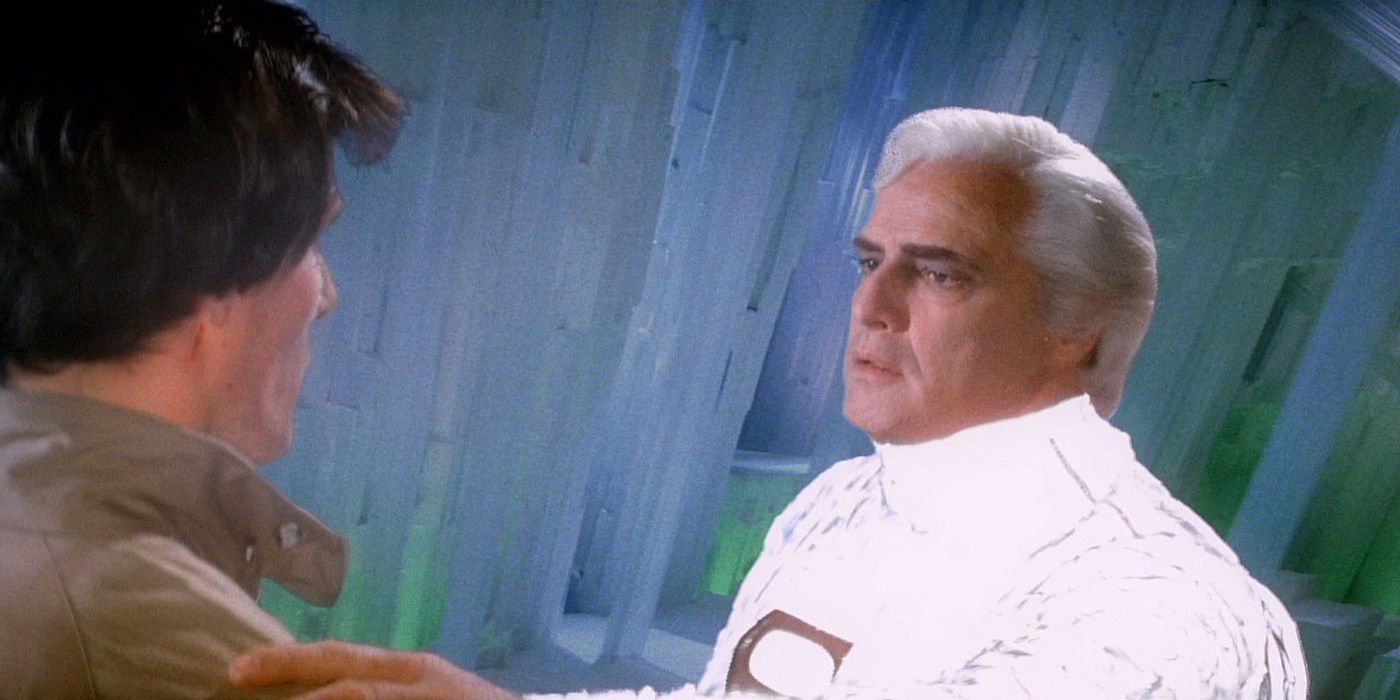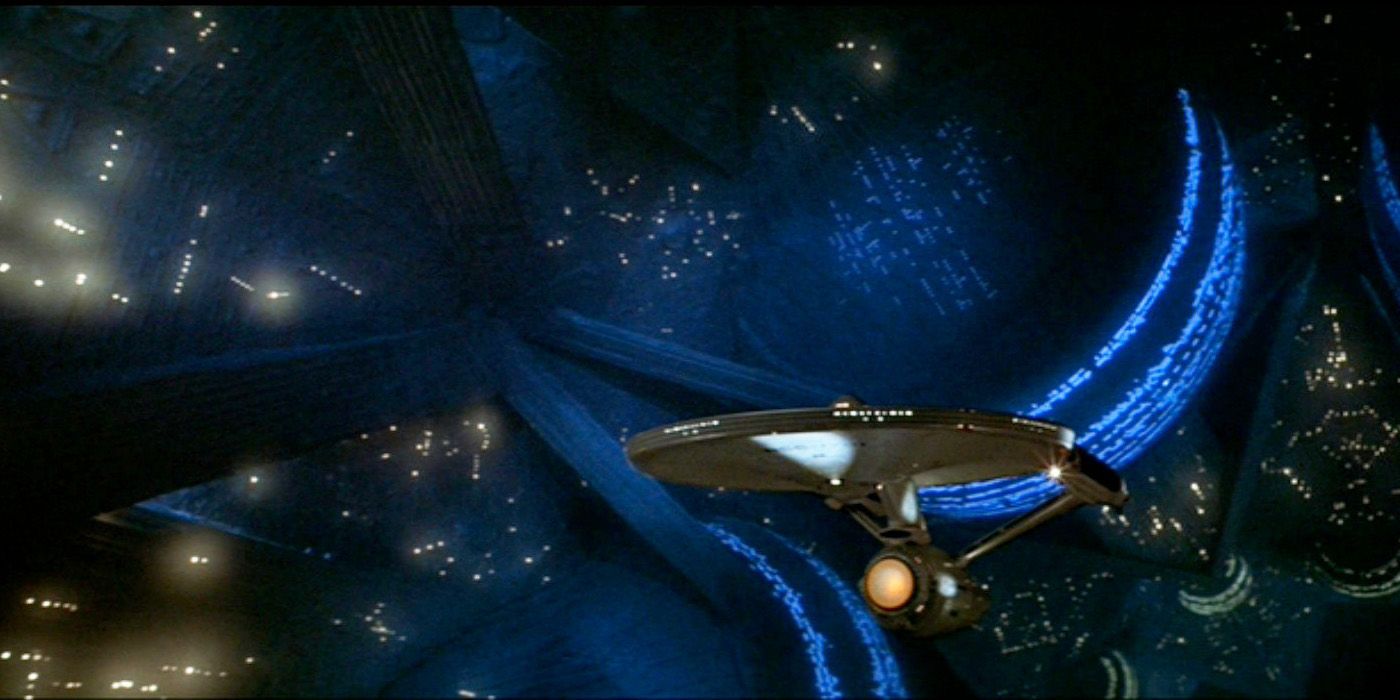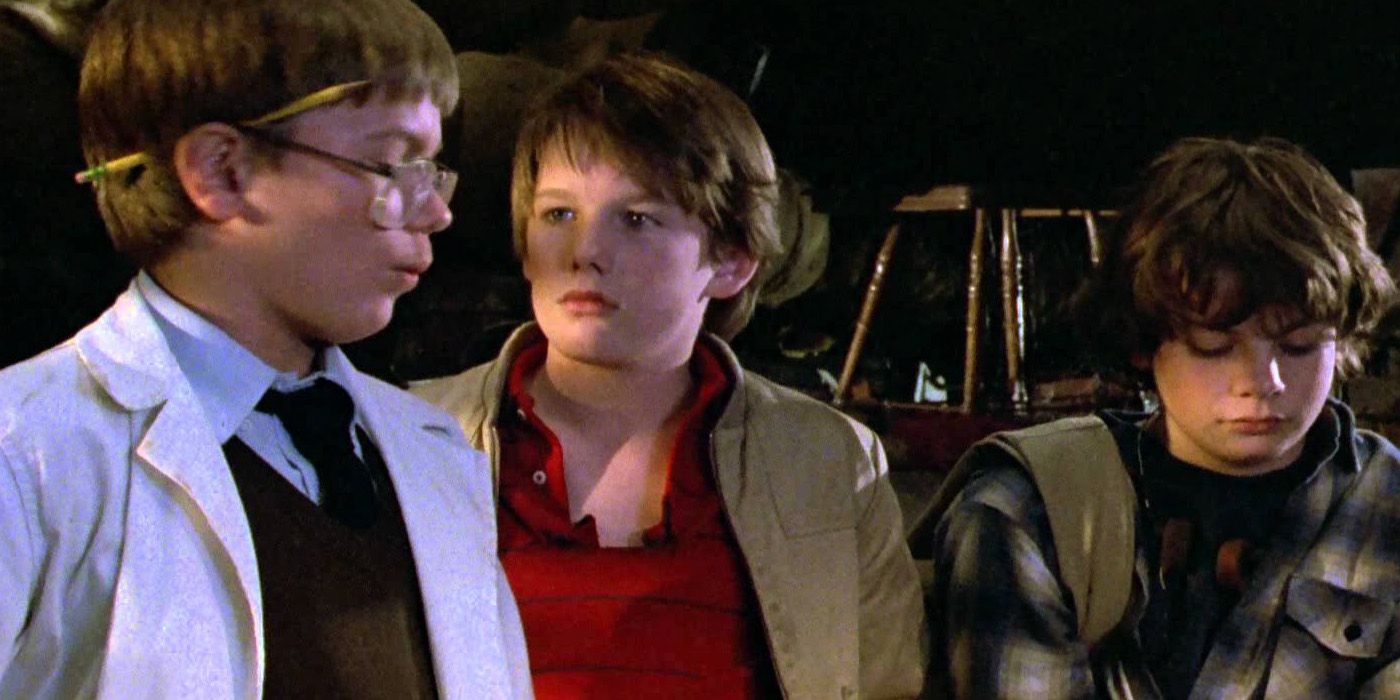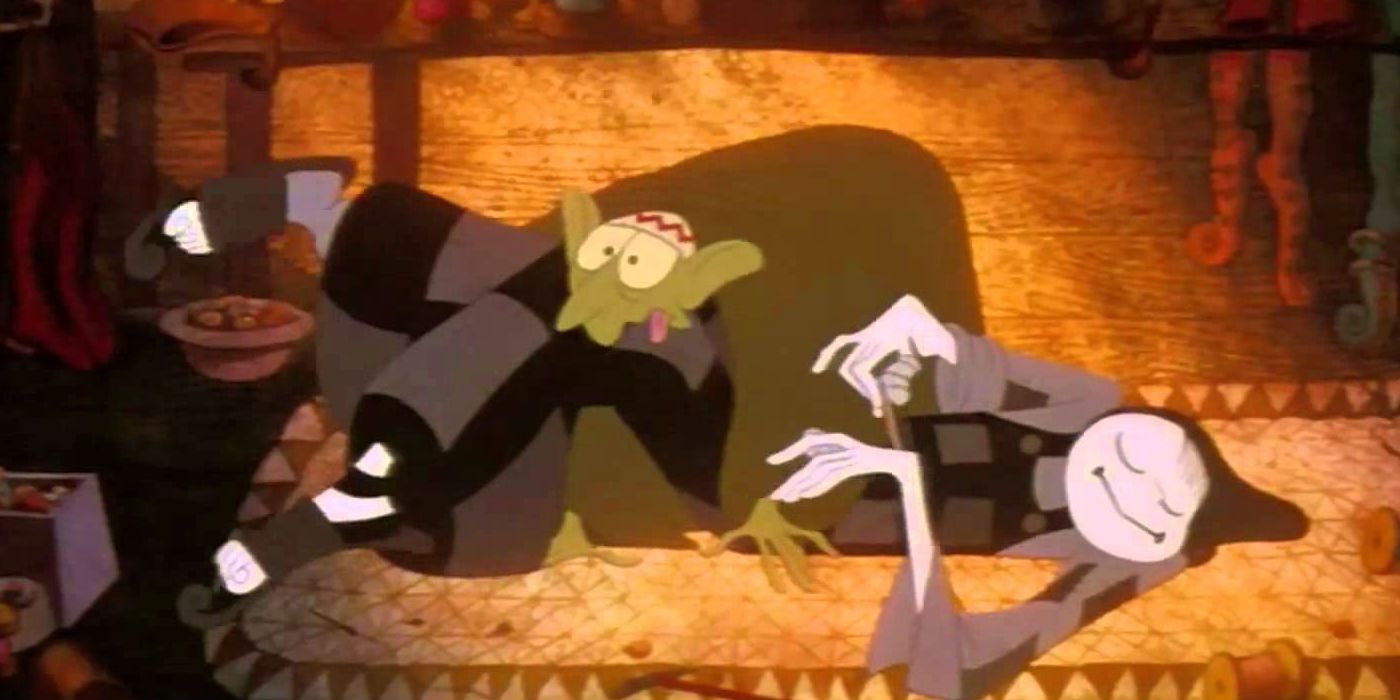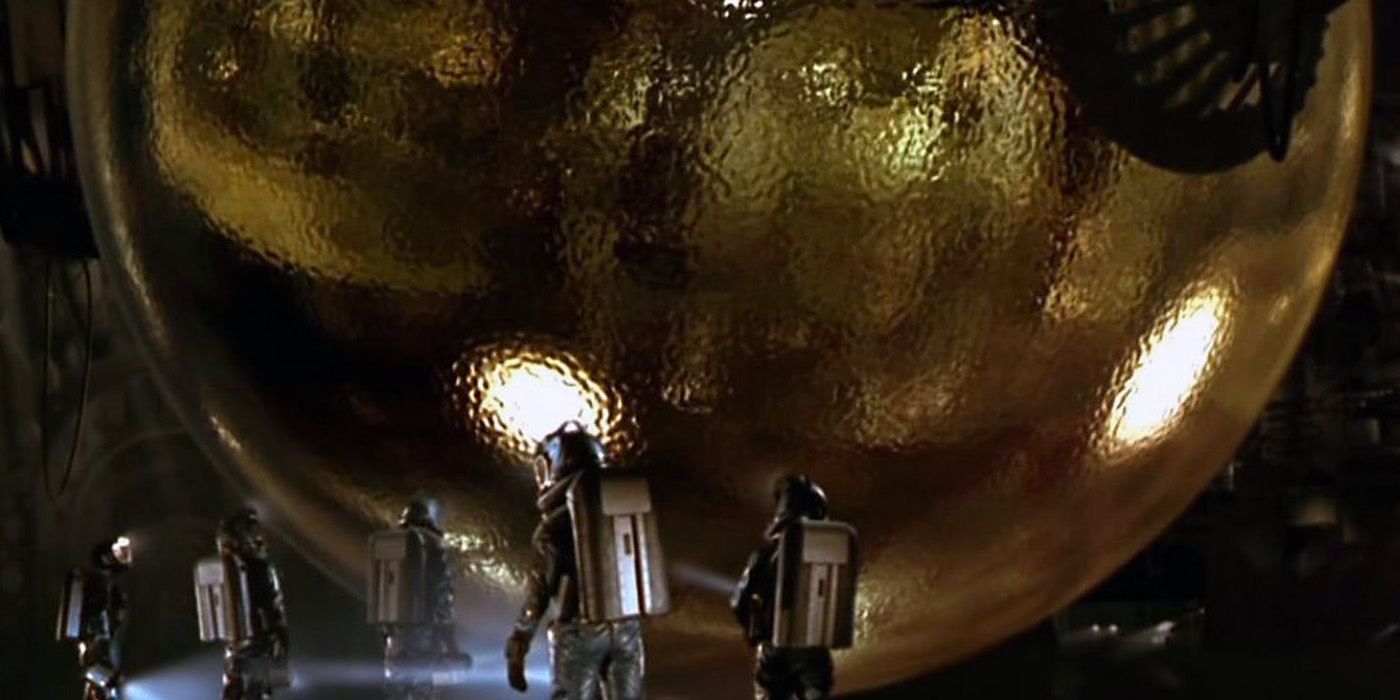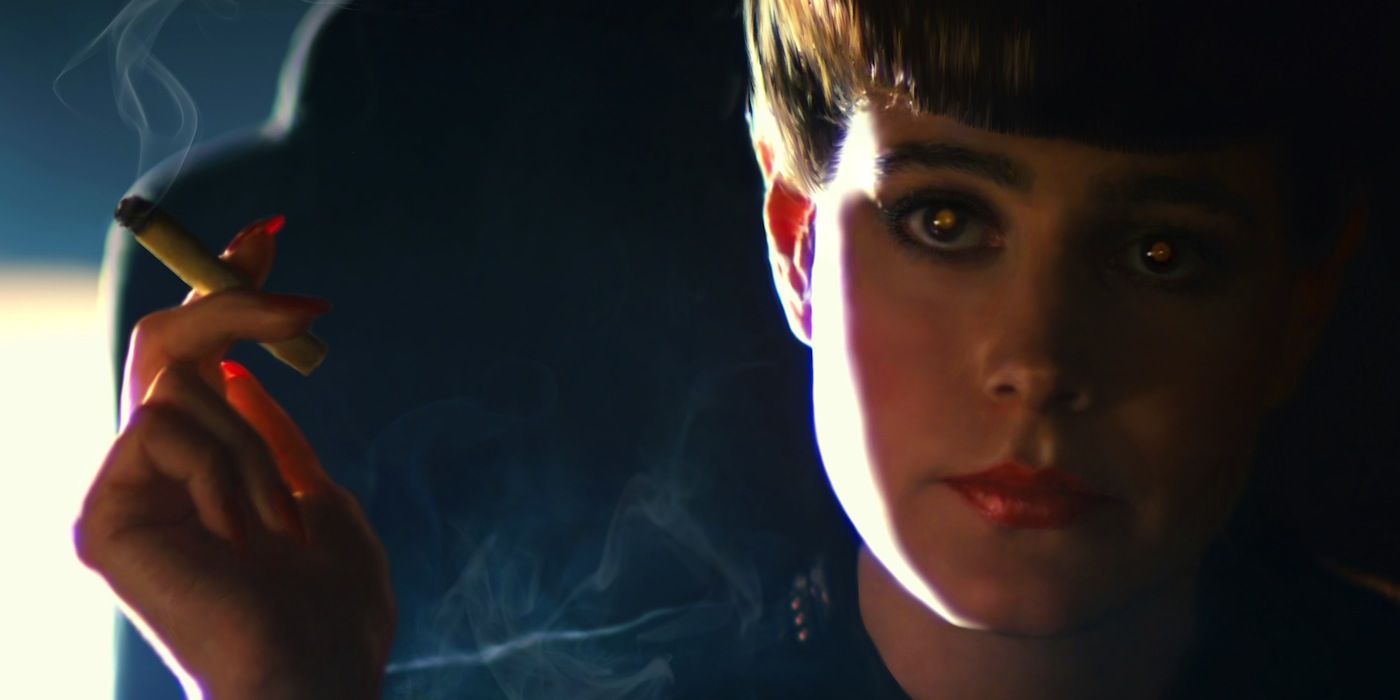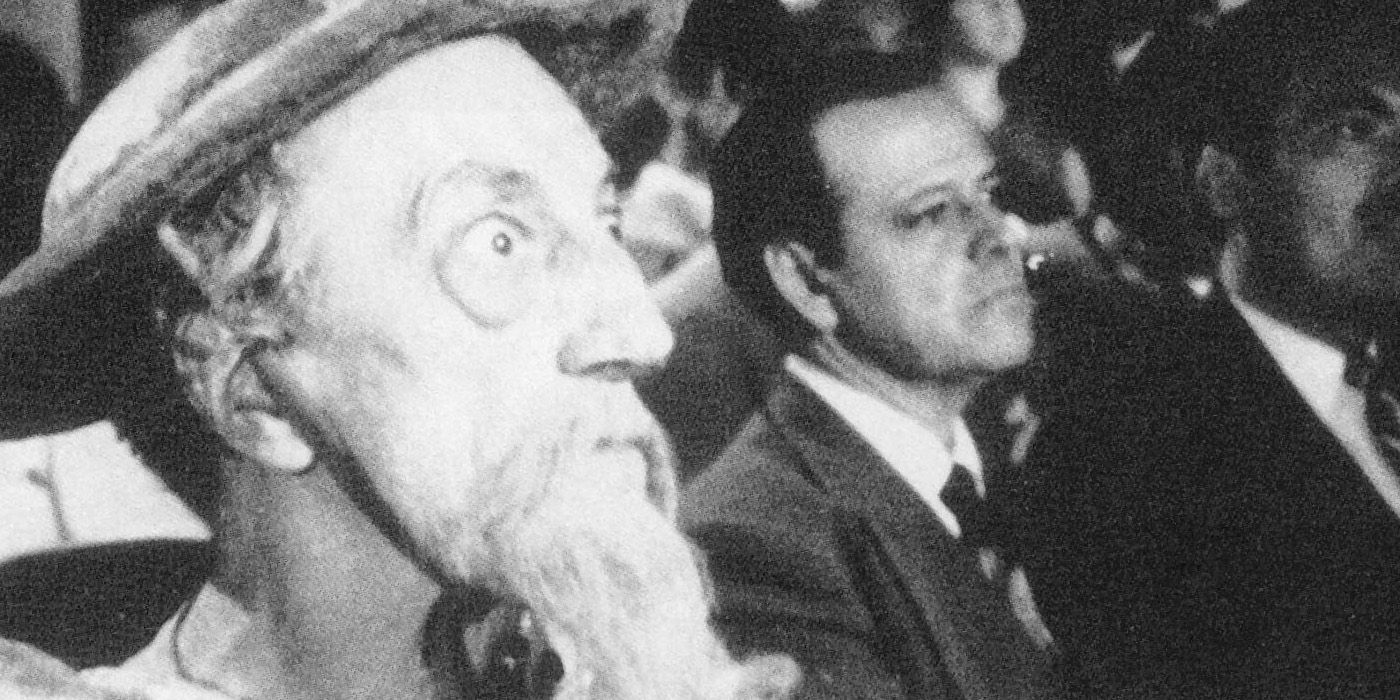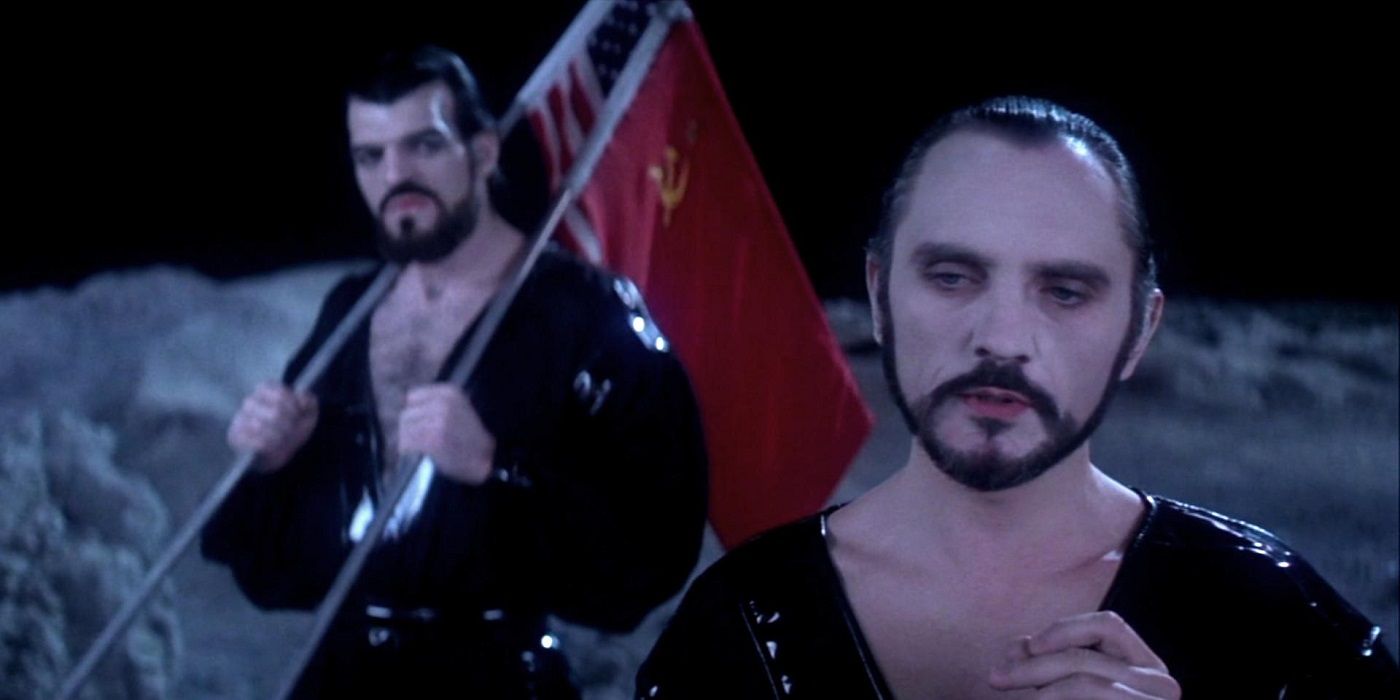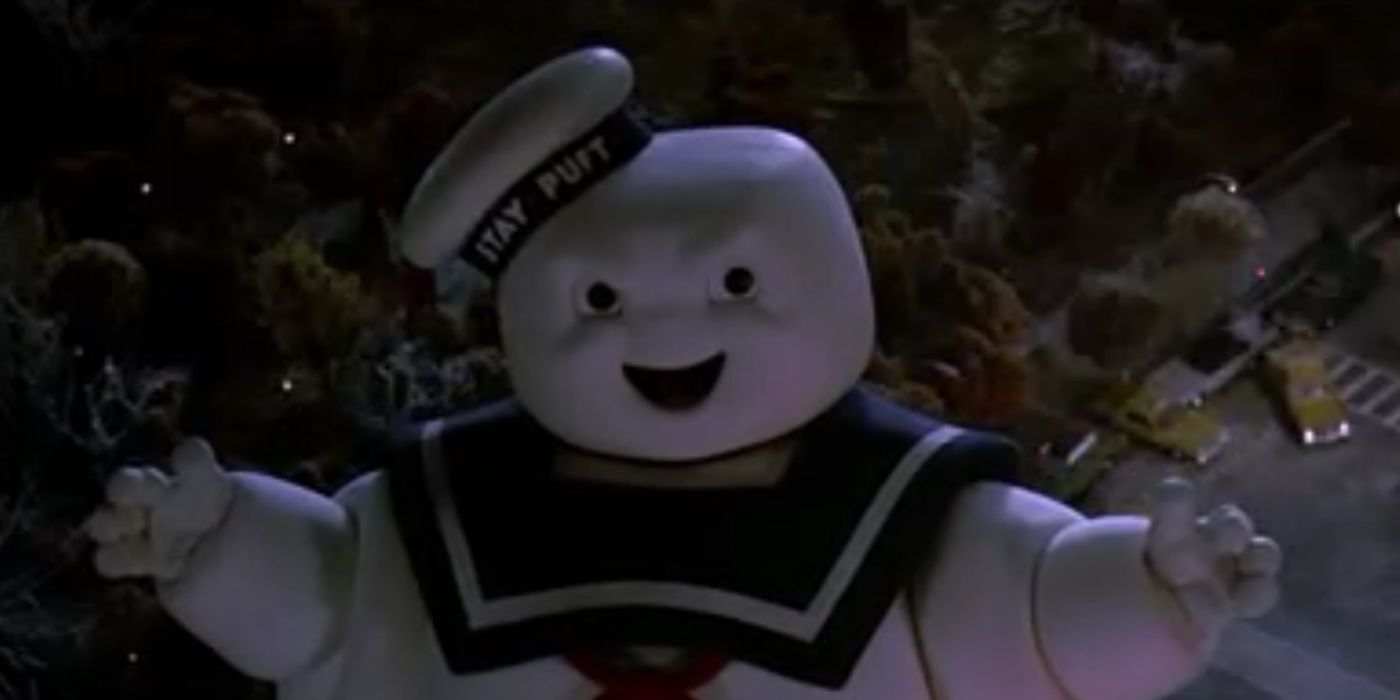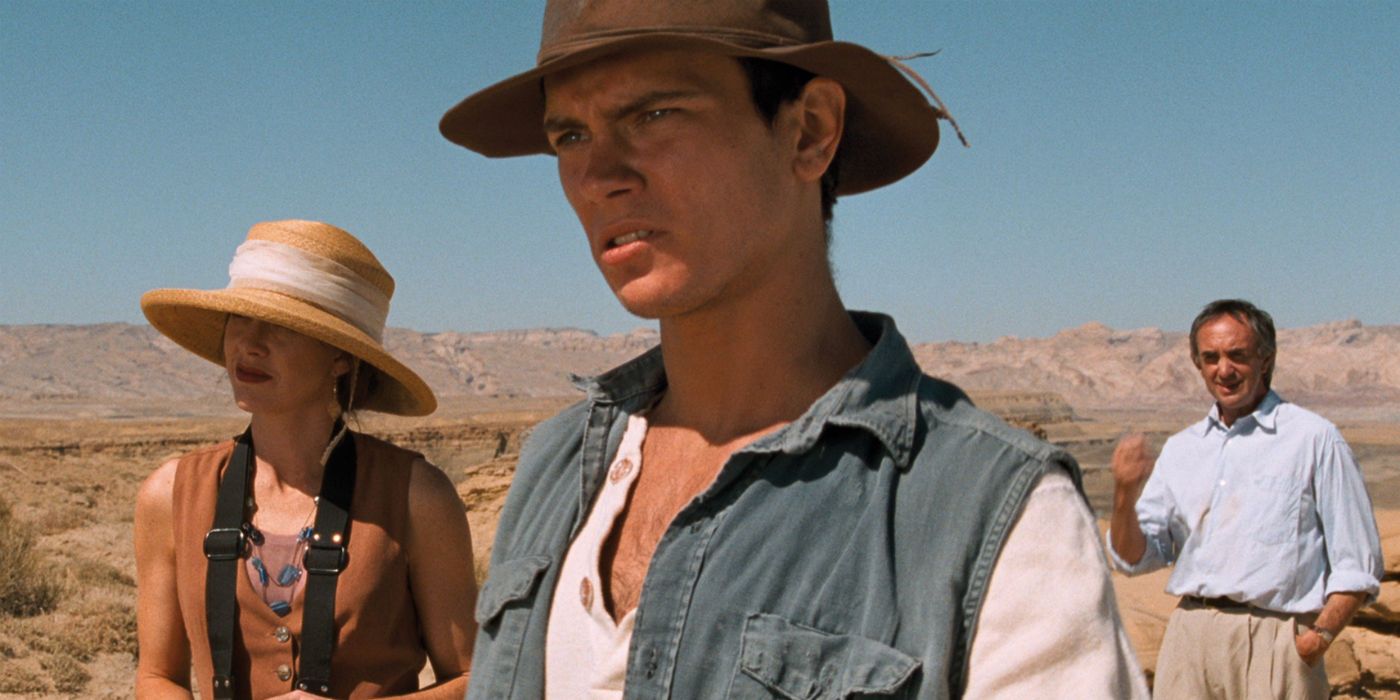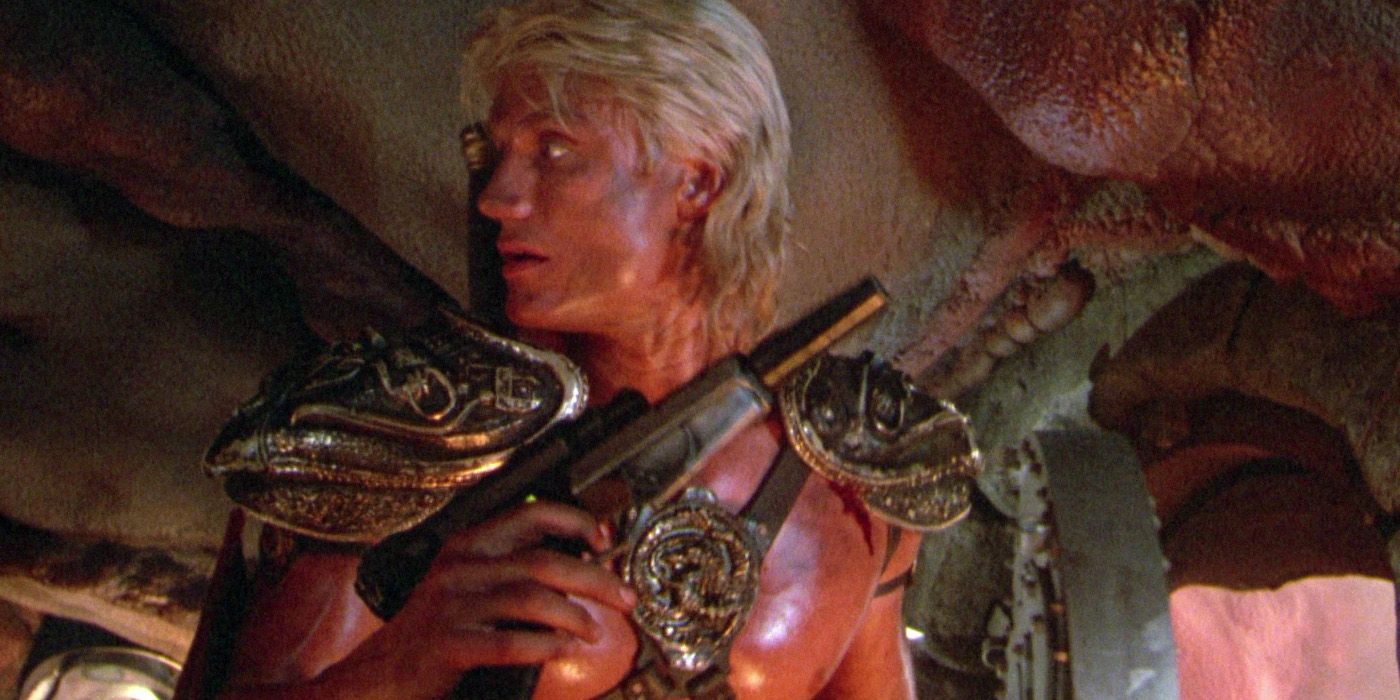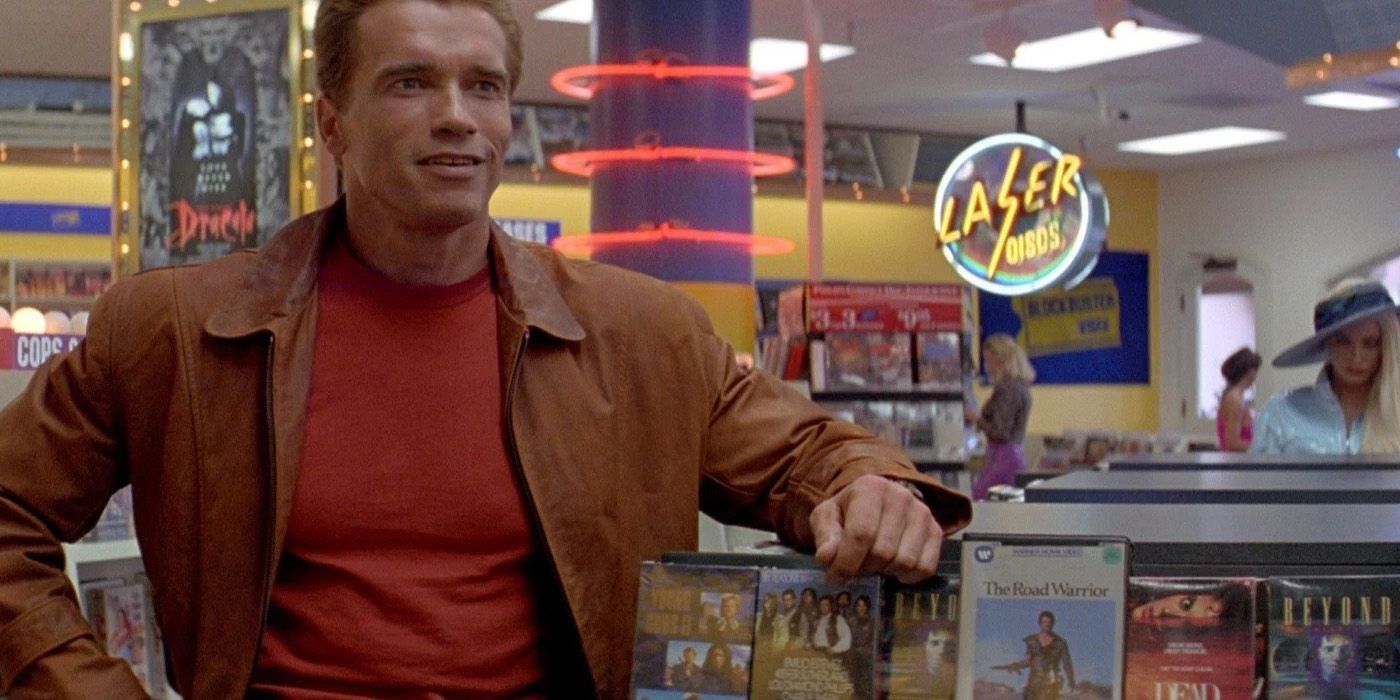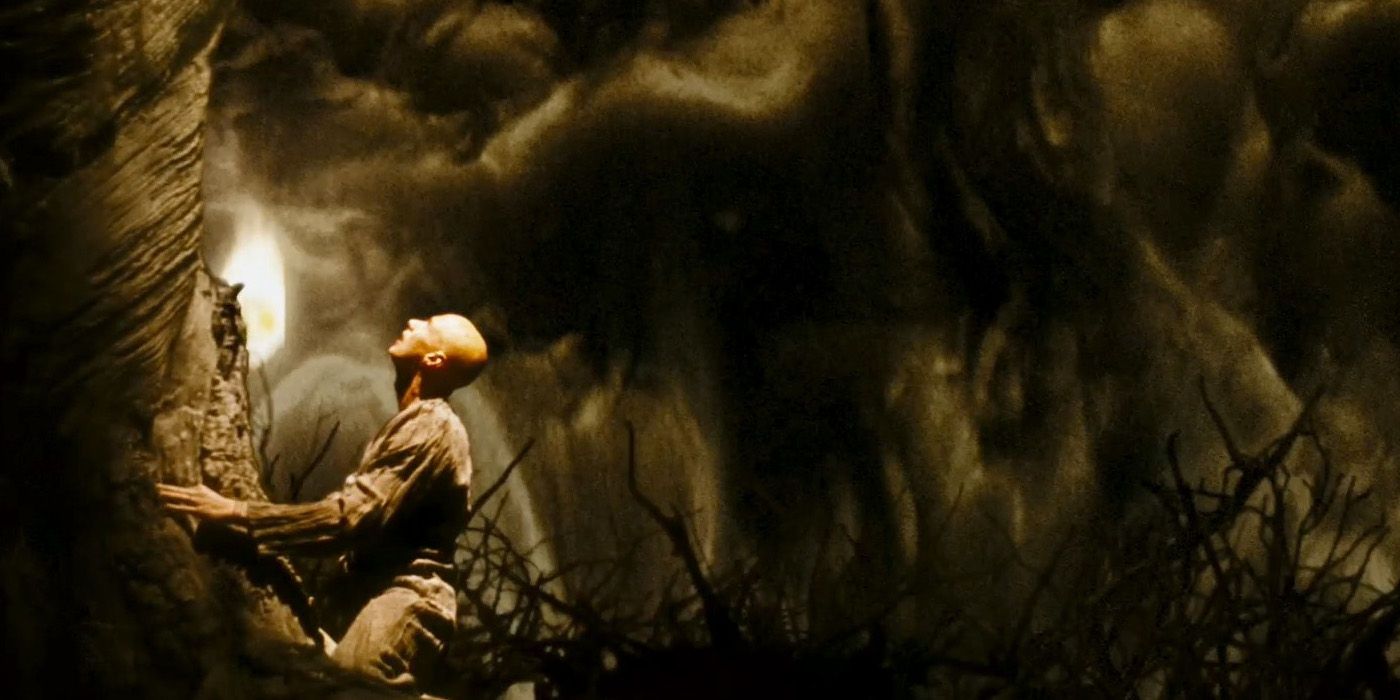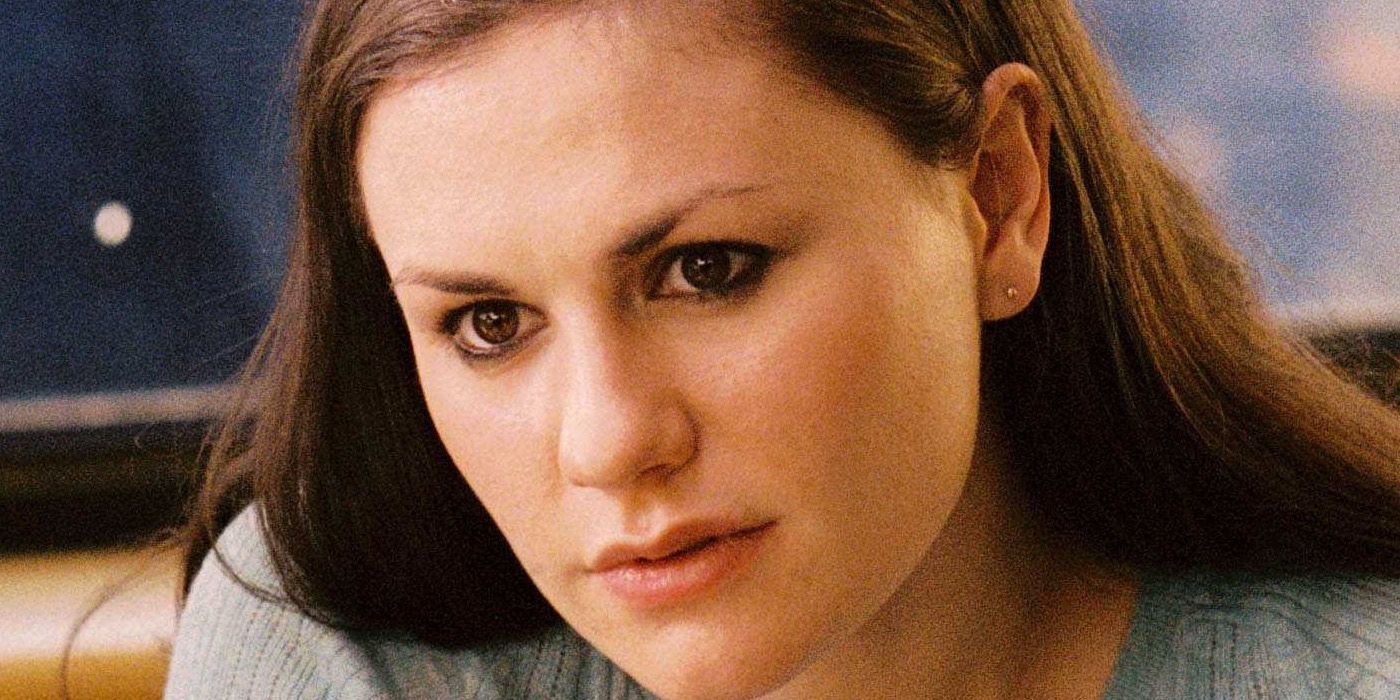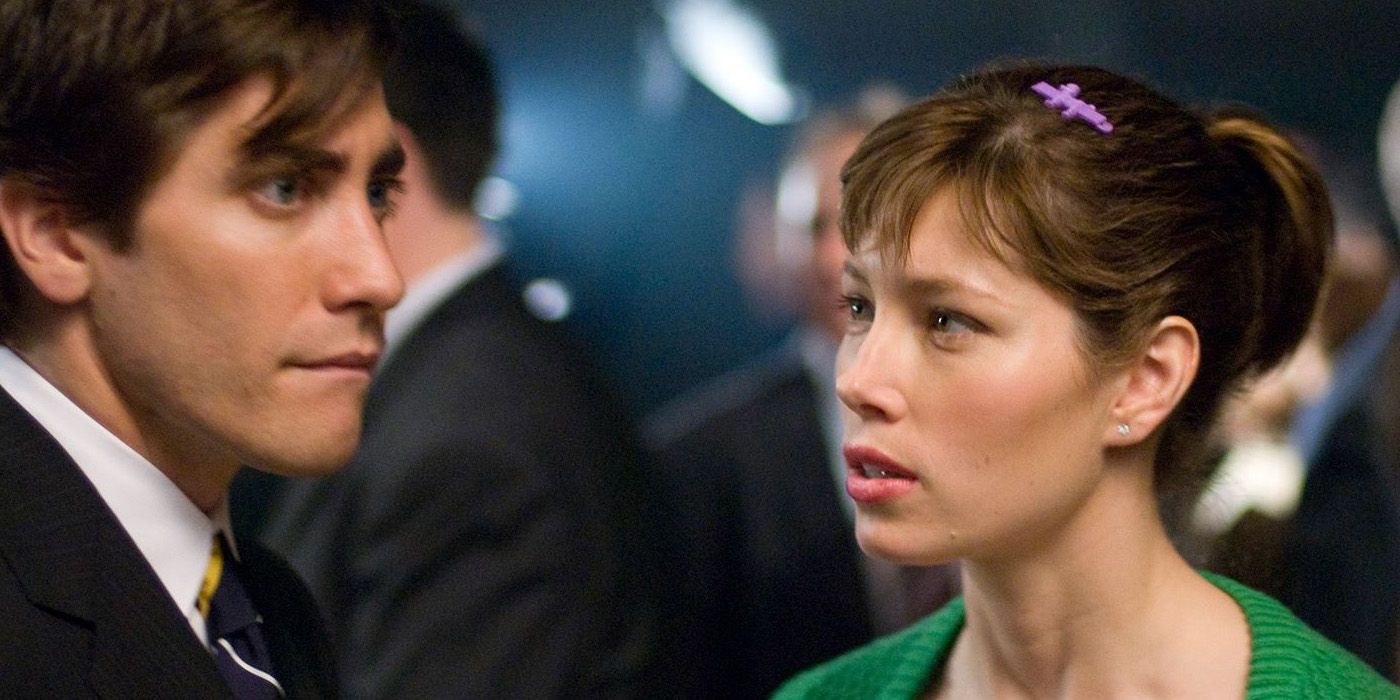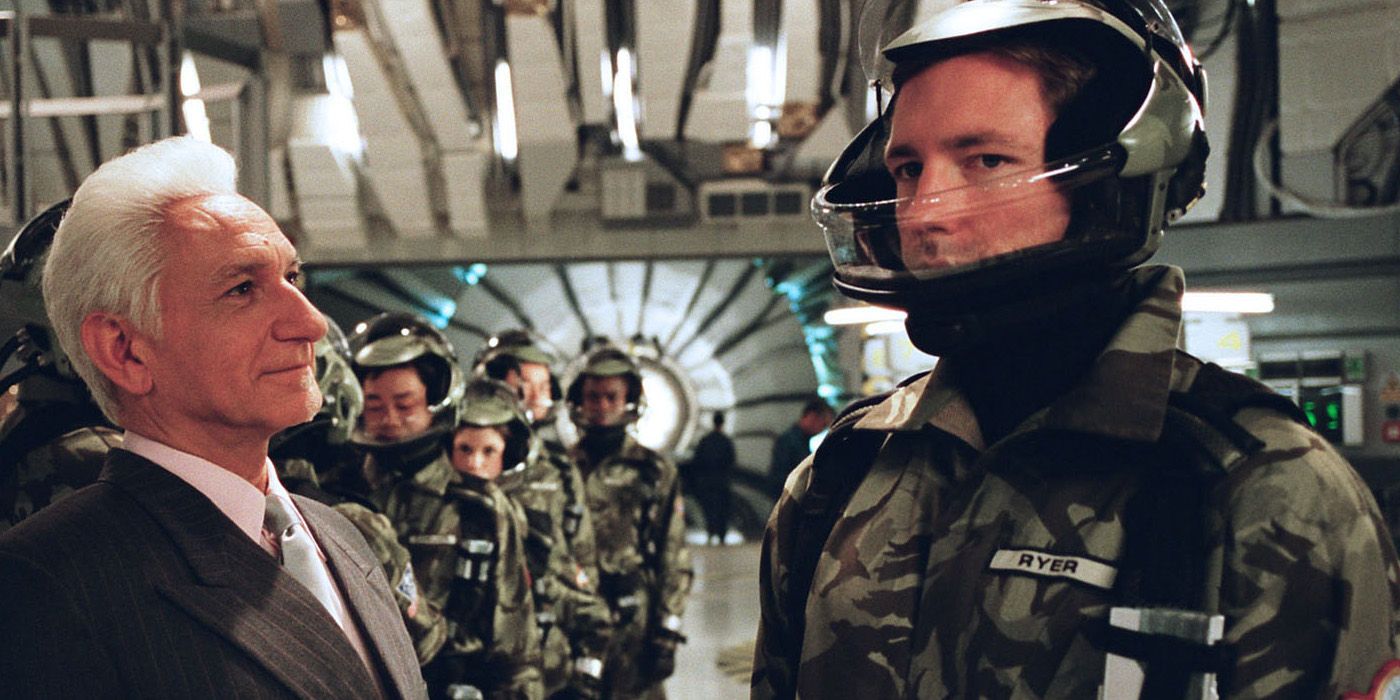In the Golden Age of Hollywood, the studios took time to finish and perfect a movie. The Wizard of Oz, for example, took a whopping three years to shoot! With the luxury of time, a studio could nurse troubled productions back to health and move their films along with thoughtful strategy. Today, things have changed, to say the least. Studios announce a release date for a movie at the same time they announce a movie will get made in the first place! Such pre-selling and strategic marketing has put new restrictions on filmmakers. Now, a movie needs to hit screens by a certain day, ready or not.
Which brings us to today’s subject: movies that got released before they were finished! Believe it or not, it happens more often than outsiders might assume. Often, scenes get discarded due to schedule or budget crunches. A director might not have time to streamline an edit of the film. Lengthy special effects work can also cause delays, forcing studios to release a movie with incomplete effects. Sometimes, audiences don’t even notice. Others, the hasty rush to hit screens shows in the final work. As long as a movie has a beginning, middle, and an end, a studio might consider it fit for release…though in some cases, the productions didn’t even get that far!
15. Star Trek: The Motion Picture
Paramount executive once likened Star Trek: The Motion Picture to a runaway stagecoach barreling down the street with nobody at the reigns. Though noted for its place in cinematic history, the production was nothing short of a disaster.
Star Trek, despite cancellation in the mid-1960s, had always remained on the sensor sweeps of pop culture. After becoming a mega-hit in syndication, Trek conventions became a phenomenon world wide, and Star Trek: The Animated Series had reunited most of the original cast for further adventures aboard the Enterprise. By the mid-1970s, parent studio Paramount couldn’t resist the chance to revive the show…and make a pile of money doing it.
What the studio didn’t count on was the pile of money it would take to bring Star Trek to life again. After going into production as a new TV series called Star Trek: Phase II, Paramount elevated the show to a big budget motion picture, with the show’s pilot episode serving as the basis for the story. The original cast returned, as did creator Gene Roddenberry, and two-time Oscar winner Robert Wise signed on to direct.
Then things went off the rails. Producer Gene Roddenberry had wanted to pen the script himself, and kept rewriting the screenplay over writer Harold Livingston's objections. This was further compounded by William Shatner and Leonard Nimoy demanding rewrites as well…to the point where new pages had to be time stamped to know which was the latest draft. Robert Abel spent months trying to do the special effects only to come back without any usable footage. Douglas Trumbull then joined the production as the effects team rushed to make the release date. In the end, not all the effects could be completed, nor did Wise have time to fine tune editing. The director took the print directly from the photography lab to the Washington premiere and handed it to the projectionist himself—still wet from the developing fluid!
Wise had a chance to complete the film for DVD in 2001. The Director’s Cut adds several new EFX shots and omits several other scenes to create a tighter, better paced film.
14. Explorers
In the mid 1980s, director Joe Dante rode a career high. Fresh off Gremlins, a collaboration with Steven Spielberg and Chris Columbus, Dante had struck box-office gold and finally had his choice of projects to develop and bring to the screen. A script called Explorers caught his eye. The story of three young boys who build a spaceship and make contact with aliens, the script had kicked around Hollywood for years without finding a studio to finance it. The success of the sci-fi family drama E.T.: The Extra Terrestrial finally got Paramount Studios to move it into production.
Dante liked the script, but worked with writer Eric Luke to retool the film’s third act. At the same time, Paramount needed a film to tap the summer movie market, and pushed the film into production with a much-shortened schedule. In fact, filming took place before scenic designers had even finished building the sets! According to Dante, the cast (which included Ethan Hawke and River Phoenix) often sunk into the ground while shooting, thanks to wet cement, and had to avoid certain areas of wet paint.
As shooting wrapped and Dante began editing his rough cut, Paramount changed the release date again, moving it from August to July. The studio forced Dante to release his rough cut, which the director found unsatisfying: he’d had to remove 90 minutes of story and redub certain scenes to work as an ending. While Explorers has a cult following today, Dante regrets the film, and has said numerous times he’d like to create a Director’s Cut to give it a proper finish.
13. The Thief and the Cobbler
Animation legend Richard Williams spent almost 30 years in production on his animated opus The Thief and the Cobbler. Featuring the voices of Anthony Quayle, Sean Connery and Vincent Price, Williams had based the screenplay on the Arabian folklore of Nasruddin, and in a most unusual move, decided to fund the production out of his own pocket, taking smaller jobs to keep the movie on track. The director also resolved to break new ground in animation, striving for more fluid movement, strange camera angles and 3-D animation. As production dragged on, Robert Zemekis spotted an incomplete version of The Thief and the Cobbler and hired Williams to oversee animation for another groundbreaking film, Who Framed Roger Rabbit.
The success of Roger Rabbit allowed Williams to get full funding from Warner Bros. to complete The Thief and the Cobbler, with a target release date of 1991. Then things got bumpy: Williams, noted for his difficult working dynamic, fired animators daily. He also insisted on filming new, unscripted sequences that didn’t further the story. As the release date approached, a screening of the still-unfinished film caused Warner Bros. to pull the plug. The studio fired Williams and brought in TV animator Fred Calvert to salvage the movie. It eventually hit theatres under the title Arabian Knight in the US and died hard at the box office. Since then, the movie has become a legend among animation fans, prompting editor Garret Gilchrist to create fan edit as close to Williams’ original vision as possible. Dubbed “The Recobbled Cut,” it utilizes footage taken from bootlegs, workprints, DVD and film stock to create the best image possible, and is available to view on YouTube.
12. Sphere
Author Michael Crichton was riding high by the mid 1990s, courtesy of the success of the film Jurassic Park based on his novel. No stranger to Hollywood, having already allowed his works Westworld and The Andromeda Strain to go before the cameras, Crichton became tinseltown’s new golden boy (emphasis on gold). Studios flocked to Crichton’s work, hoping to create another hit.
Things got off to a bumpy start with Rising Son, a crime mystery starring Sean Connery and Wesley Snipes. The movie proved a hit despite mixed reviews, as did the thriller Disclosure starring Michael Douglas and Demi Moore. Producer Frank Marshall opted to try directing the adaptation of Crichton’s Congo, which bombed at the box office. Then, Oscar-winner Barry Levinson signed on to helm the big-screen version of another Crichton sci-fi opus, Sphere about a spaceship discovered embedded in the ocean floor.
Levinson had a Hell of a pedigree: his film Rain Man had made big bucks in theaters and swept the Academy Awards. His follow ups, Bugsy and Wag the Dog, also did well commercially and earned glowing critical notice. As Levinson worked on the script, he managed to attract megastars Dustin Hoffman, Sharon Stone and Samuel L. Jackson to sign on to the project.
Then Sphere started treading water. The aquatic sequences caused the budget to swell, as did some costly special effects. Script choices to make the story more cinematic caused plot holes, and a negative test screening resulted in some expensive reshoots. In the end, both Levinson and the cast expressed their displeasure with the film. Levinson and Hoffman had both wanted to address more problems in the film through edits and reshoots, while Warner Bros. had to ship the film to theaters to make a set release date. Both Levinson and Hoffman have said they regard the film as unfinished, and a missed opportunity.
11. Blade Runner
Perhaps, dear reader, you’ve heard of a little sci-fi film called Blade Runner and the upteen versions of the movie floating around on home media. Though a seminal film which virtually every other sci-fi epic steals from in some way, Blade Runner had a dreadful production history which ultimately resulted in audiences seeing an incomplete film.
Ridley Scott had spent years on Blade Runner, refining the script with writers David Peeples and Hampton Fancher. The story originally followed detective Rick Deckard (played by Harrison Ford) as he tracked down five replicants—genetically engineered human slaves with a four year lifespan. Along the way, he’d fall in love with a mysterious woman (Sean Young), whom he later discovers is also a replicant.
Production on Blade Runner sprawled. In the midst of it all, a writers' strike put a freeze on rewrites for an unfinished script…after the movie had begun to shoot. A replicant character, Mary, was dropped from the film entirely despite the role already being cast, and her absence creating several plot holes. The special effects pushed the technological limits of the time, while the studio found a rough cut too depressing and demanded a new ending. Blade Runner flopped in theaters, due in large part to audiences confused by plot inconsistencies, shoddy edits and unfinished effects. Still, it found a huge cult following over the years, and as stories of the Hellish production came to light, fans began to cry out for a Directors Cut. After several other versions were released, Ridley Scott and Warner Bros. collaborated on an edit deemed the Final Cut, which cleaned up some of the frayed edges and plot contradictions. It debuted to unanimous raves in 2007.
10. Don Quixote
Hollywood legend has it that Cervantes epic novel Don Quixote is cursed: several attempts at a movie version have bombed in theatrical release and on television, while others like Terry Gilliam’s The Man Who Killed Don Quixote made headlines for a production gone haywire, and for the studio pulling the plug on the movie. The most notorious of all ill-fated attempts to film Don Quixote came from the cinematic master, Orson Welles.
Welles, a lover of classic literature and drama, had long wanted to film Don Quixote as early as 1955. The director initially pitched the film as a TV project, and went so far as to film color test footage of several actors. CBS showed interest in the project, but killed it after viewing the test footage. In the meantime, Welles had begun work on Touch of Evil, a film which would forever derail his career as a Hollywood director. When Universal fired Welles from Touch of Evil during the post-production phase, Welles began to work again on Don Quixote.
Welles began shooting in Mexico in 1957 without a finished script. When money ran out, Welles decided to fund the movie himself. He began accepting more and more acting work in an attempt to raise funds. The director filmed on and off in Spain for a full decade, even past the death of actor Francisco Reiguera, who played the title role! Reiguera had warned Welles of his declining health in the 1960s, which did prompt the director to film as much as possible.
Even so, Welles never completed Don Quixote. Because he’d financed the film himself, Welles always treated it as a personal project, likening it to a novel written as a hobby. The director was still filming as late as the 1970s, and continued to seek post-production funds until his death in 1985. Then, in 1992, Don Quixote actually did get a release! A pair of Spanish producers managed to procure some of the footage and put together a rough cut running 116 minutes, though they did not have access to all of Welles’s footage. Fans still hope that one day all the footage can be consolidated and edited together, following surviving notes and preliminary edits by Welles himself.
9. Superman II
Geeks have already chronicled the woes which plagued Superman II in great detail, though it too bares mentioning here. Richard Donner had directed the original Superman with Christopher Reeve, Gene Hackman and Margot Kidder to great success in 1979. Production, however, had raged out of control: producer Alexander Salkind had wanted Donner to film to movies at once, Superman I and II for back to back yearly releases. Donner had tried to comply, but script problems and the extreme cost of special effects had forced the director to focus on finishing Superman in time for release. Rather than end the film on a scripted cliffhanger, Donner and writer Tom Mankiewicz also decided to move the proposed end of Superman II to cap the action of the first film.
Superman opened to wide acclaim, and Donner had planned to return to finish up the sequel. The production had shot about 75% of the movie before its forced hiatus, thus the director didn’t anticipate the problem. Donner had, however, suffered a heated relationship with producer and Salkind depute Pierre Spengler, and when Donner demanded Spengler removed from filming the rest of Superman II, the director found himself out of a job. Angry and bitter to this day over his treatment by the producers, Donner saw vindication in 2006. Studio Warner Bros. discovered heaps of missing footage from Donner’s original incarnation of Superman II and offered him the chance to complete the film as he saw it.
There were some problems however: not all key scenes had been filmed, and the death of star Christopher Reeve prevented Donner from rolling cameras again. He and editor Michael Thau improvised by editing screen tests together to approximate the scene. Moreover, the Donner Cut reused the ending of the first Superman since the director had been fired before he could devise a new one with Tom Mankiewicz. The result is a less-than-complete film, but a satisfying story and priceless glimpse into what might have been.
8. Ghostbusters
Ghostbusters was an odd film for Hollywood to tap in 1984. A quirky mix of sci-fi, horror and comedy, it featured Saturday Night Live alumni Bill Murray and Dan Aykroyd, as well as writer Harold Ramis, character actor Ernie Hudson and sci-fi siren Sigourney Weaver. Director Ivan Reitman had his own share of hits prior to Ghostbusters going before the camera, but they’d all been comedies like Animal House, Stripes and Meatballs. The film also utilized state-of-the-art special effects to create a New York City plagued by an invasion of ghosts.
That Ghostbusters proved a major box office success and became something of a latter-day classic seems like a joke itself. Director Reitman has discussed development and casting issues that bogged down the production, as well as the rush to get the film ready for theaters. Most glaring, according to him, are several hastily assembled effects shots: in one scene, cables controlling the Stay-Puft Marshmallow Man can be seen on the creature’s suit, and in another, the Ghostbusters are clearly mounted on wires for a stunt. During an earthquake sequence, the “ground” actually appears made of fabric rather than rock. Though the unfinished shots continue to drive Reitman nuts, he’s often remarked that audiences didn’t seem to mind!
7. Dark Blood
River Phoenix makes his second appearance here, though this time for tragic reasons. Phoenix overdosed on cocaine and morphine in October 1993, leaving Dark Blood in limbo.
Dark Blood starred Phoenix, Judy Davis, Jonathan Pryce and Karen Black, and the production had filmed in Utah prior to Phoenix’s death. A bizarre thriller, the story followed a middle-aged married couple (Pryce and Davis) who have car trouble in a desert. While looking for help, they encounter Phoenix (called only “Boy”) who then plots to torture and murder the couple. The production had wrapped all location filming in Utah and returned to Los Angeles to shoot the remaining portions of the film on soundstages. At the time of Phoenix’s death, about 80% of the film was finished, which placed the production in jeopardy. With Phoenix’s family unwilling to participate in finishing the movie (a stance which they have since reiterated), it landed in the vaults for almost 20 years.
Upon the collapse of the film, all footage became the property of the insurance company which had underwritten the production. Director George Sluzier finally located the reels in 2011, and succeeded in stealing them from a warehouse. Sluzier then assembled a rough cut of the film, and provided narration to fill in the plot over unfilmed scenes. This approximation debuted in 2012 to a positive reception.
6. Masters of the Universe
He-Man had the power in the 1980s, as his toy line featuring strange creatures and warriors filled toy shelves and posted staggering grosses for parent company Mattel toys. An animated series had raised a strong following on television, and sensing Star Wars-type profit, Mattel began to shop out the rights to movie studios for a live action theatrical release. Ironically, at the time no studio believed a movie based on a toy line could become a box office draw. What would those studio executives say about the Transformers series today?
Back to Masters of the Universe though. The only studio willing to take a chance on the property was the B-movie schlock factory Canon Films, best known for Breakin’, the Death Wish sequels, and The Delta Force. Canon proposed that Mattel fund half of a proposed $35 million budget, with the rest covered by Canon’s investors. The studio neglected to mention one thing: Canon was already bankrupt!
Masters of the Universe featured a respected cast and a passionate director in the person of Gary Goddard. Goddard strode to elevate the material to a Star Wars-level epic, though when Canon slashed the budget in half (the half which Mattel provided to those keeping track), script rewrites eliminated most of the strange creatures & locations which had helped boost the popularity of the toyline in favor of resetting the action to Southern California. Worse, Canon shut down production several days early, without filming the climax of the film!
Goddard pleaded for extra money, and several months later, Canon did allot him a small amount to create a makeshift ending. Goddard admits that the pickup footage pales in comparison to the elaborate action sequence he’d planned, and still considers Masters of the Universe unfinished.
5. Last Action Hero
In the 1990s, Hollywood had fallen into a nasty habit of spending money as a sort of machismo show off. Budgets ballooned, as did cross promotional synergy. Not only could a movie hit theaters, it could also occupy toy shelves, t-shirts, game consoles, fast food restaurants, cereal boxes, and hours of Entertainment Tonight coverage courtesy of on-set interviews and bloated, decadent premiere parties. That cocky, bloated self-indulgence hit a fever pitch with Last Action Hero, the first movie slated to be advertised in space…for all the moviegoers who might live there.
Last Action Hero began as the film school project of buddies Adam Leff and the aptly-named Zak Penn, who would go on to commit crimes against humanity by penning X-Men: The Last Stand and the 2005 Fantastic Four adaptation. Penn had envisioned the movie as a satire of action movie tropes, and Hollywood received it well. Sony optioned the script and signed box office superhero Arnold Schwarzenegger to star.
Then all hell broke loose. The studio immediately hired Shane Black to rewrite the script into a more typical action movie, and later, William Goldman to appease Schwarzenegger who had script approval. A number of esteemed directors including Robert Zemeckis and Penny Marshall passed on the project before John McTiernan took on directing duties. Spending on the movie went out of control, and with a set release date looming, McTiernan had to complete the film on an abbreviated post-production schedule. A test screening of a rough cut mere weeks before the release proved disastrous, with negative word of mouth leaking into the press. McTiernan had wanted more time to refine the film and try to fix it in reshoots, but in the end, Sony had to make a release date. Unfortunately Last Action Hero debuted a week after Jurassic Park thundered into theaters, and fell prey to the revived dinosaurs.
The unfinished Last Action Hero died a miserable death at the box office and is known more today for the hubris surrounding it than for what’s on the screen (which isn’t much). It also marked the end of Hollywood’s overproduced, undercooked, “look how much we’re spending” blitz…at least for movies not touting the name “Abrams.”
4. The Fountain
Darren Aronofsky had become an art house darling with two very low-budget films. Pi, a story about a mathematician who discovers the key to understanding the universe, garnered him excellent critical acclaim. His follow up, Requiem for a Dream, became indie hit, scoring an Oscar nomination for actress Ellen Burstyn. Confronted with the prospects of more commercial films—including a Batman reboot—the director instead to focus on a more personal project. The director had begun the screenplay for The Fountain after learning both his parents had developed cancer and begun working on a story about love and human mortality. Around the same time, the success of The Matrix made Aronofsky reflect on the science fiction genre, and the two inspirations coalesced into a story he called The Fountain.
Based on the success of Pi and Requiem for a Dream, Warner Bros. set up The Fountain with a healthy $70 million budget. Brad Pitt had signed to star, and Cate Blanchett began meeting with Aronofsky to play the female lead. Preproduction had begun, including construction of a massive 10-story pyramid set. Around the same time, Pitt began having reservations about the script, and demanded rewrites from Aronofsky. When the director refused, Pitt quit the film leaving the project in limbo just seven weeks away from shooting. In response, Warner Bros. cancelled the film and auctioned off the sets, losing $18 million on the production.
Several years later, and after failing to get other projects off the ground, Aronofsky returned to The Fountain writing a pared-down version of the script to make on a tiny budget. Warner Bros. resurrected the project, this time with Hugh Jackman and Rachel Weitz in the leads. The final release met with mixed reviews and audience puzzlement. The great Roger Ebert postulated that The Fountain was only partially complete, and had deviated too far from Aronofsky’s original vision. Later events supported Ebert’s hypothesis when the director recorded his own commentary track for the DVD, and released a graphic novel which followed his original screenplay. Furthermore, Aronofsky has stated that he would like to assemble a new version of the film using deleted and alternate scenes suggesting that, at least in his mind, the project remains incomplete.
3. Margaret
Writer Kenneth Lonergan first had a hit with the play This is Our Youth in 1996. Successful runs in New York and London, the latter of which starred Hayden Christiansen and Jake Gyllenhaal, helped him transition into writing for the screen. Analyze This established Lonergan as a skilled screenwriter, and he used the career capital to snag his first writer/director job, You Can Count On Me. The film scored two Oscar nominations, including one for Lonergan’s script. After penning Gangs of New York for Martin Scorsese, he decided to further cement his reputation as an auteur by writing and directing the film Margaret.
Margaret focused on a young woman whose life falls apart following a bus accident. The cast boasted Oscar winners Matt Damon and Anna Paquin, as well as Mark Ruffalo, Jean Reno and Matthew Broderick. Produced by Scorsese, Margaret looked like sure fire Oscar bait for the 2007 awards season. Filming had gone smoothly, though post production had not. Lonergan struggled to cut the film down to a manageable length, and began a furious tug of war with the studio over the final runtime. The studio mandated that Lonergan’s final edit run under two and a half hours, while the director insisted the film run closer to three. The dispute dragged on and on…right past the movie’s release date. Then things got really bad after Lonergan got slapped with a series of lawsuits.
After years on the shelf, Martin Scorsese personally stepped in to complete the film. Working with longtime editor Thelma Schoonmaker, Scorsese managed to edit the runtime down to 165 minutes. The eventual release in 2011 netted positive reviews, though it bombed in theaters. Lonergan dismissed the theatrical edit as incomplete. He eventually finished it close to his original vision for DVD with a final three hour runtime.
2. Nailed
Nailed began as a book by Kristen Gore (daughter of former Vice President Al Gore) called Sammy’s Hill. The book garnered a following, and in 2008, four years after publication, acclaimed director David O. Russell signed on to direct the film version. With a budget of $26 million, Nailed boasted a cast which included Jessica Biel, Jake Gyllenhaal, James Marsden and Catherine Keener. Production on the film was nothing short of disastrous: filming moved in fits and starts thanks to frequent walkouts by unpaid cast and crew. Moreover, James Caan, who had a featured role, quit the film during shooting after script disputes arose with Russell.
Sensing a possible disaster, the producers decided to move a climactic scene in which Biel’s character shoots herself with a nail gun to the end of filming. The reason: they feared that production company Capitol Films would try to release the movie incomplete should further cash flow issues arise. Their intuition proved correct: Capitol Films shut down production on Nailed two days early, leaving the film in limbo.
Nailed sat on the shelf for almost six years before Capitol Films raised the money to complete production. In 2010, the company tried to get Russell to return and finish the movie, but the producer balked over proposed salary cuts. Both the director and producers quit, forcing the production company to hire a new editor and director to film reshoots. Shortly after filming the reshoots, Capitol declared bankruptcy.
Flash forward to 2014, when Millennium Films purchased Nailed with the intention to release it. Russell had already dismissed and disowned the film, calling it incomplete. The final edit, retitled Accidental Love, met with former director Russell’s ire. Russell removed his name from the film, which didn’t even make it to theaters! Millennium instead released Accidental Love On-Demand and on DVD, where it quickly flopped both critically and commercially.
1. A Sound of Thunder
Ray Bradbury keeps getting a raw deal in Hollywood. The lauded author of classics like Fahrenheit 451 and The Martian Chronicles can't seem to get a decent page-to-screen translation of his work. His project Something Wicked This Way Comes got picked up by Disney only to have the studio tone down the content and balk at the needed effects. What should have been a sure-fire hit--the big budget adaptation of Fahrenheit 451, directed by screen legend Francois Truffaut--landed to mixed reviews. Critics and audiences criticized the direction and script--both by Truffaut, who barely spoke English! Hollywood also didn't have the technology to faithfully represent some of the novel's most outlandish elements, and the excision of poison dogs and portable communicators stripped much of the joy of the sci-fi text away. The author lived to see a final adaptation of his acclaimed story A Sound of Thunder hit screens in 2005, which made for possibly the grimmest mishandling of his work yet.
Following the success of the Jurassic Park films, adapting a time travel story about dinosaur hunters seemed like a good idea. A Sound of Thunder seemed like a sure-hit: with action director Renny Harlin at the helm, the cast boasted Ben Kingsley and Pierce Brosnan along with a robust $80 million budget. Then things went south: Bradbury fought with Harlin over the creative direction of the film, leading the producers to sack the director. Peter Hyams then joined the production. A director with an uneven track record, he had none the less directed some fine sci-fi films like Capricorn One, 2010 and The Relic. Production began, and then things really went south. Floods in Prague destroyed the film's sets, requiring they be rebuilt at extra cost. Then the production house, Franchise Pictures, went bankrupt. Granted, Franchise didn't have a great track record when it came to its cinematic output. Movies like The Boondock Saints and Battlefield Earth aren't exactly heralded as cinematic classics.
Franchise had been accused of shady accounting practices prior to bankruptcy, and A Sound of Thunder tends to support that allegation. Despite a budget of $80 million, the production company spent only $30 million on the film. Pierce Brosnan had quit when Harlin was fired, leaving Edward Burns to round out the cast. After filming wrapped, and with Franchise in bankruptcy, an assembly screening didn't go well. Rather than try to come up with funds to finish the demanding special effects, Franchise instead opted to use animatics--that is, computer generated low-quality animations that are supposed to stand-in for the real thing. The unfinished result had the same handful of CGI cars driving by anytime a character walked down the street.
Needless to say, A Sound of Thunder bombed in theaters, becoming another blemish on Bradbury's Hollywood reputation. Even if Hyams had the money to finish the movie, it probably wouldn't have saved it from the wooden acting and abysmal screenplay that also condemned it to godawfulness. As an unfinished work though, it delves into a new level of pathetic.
-
Can you think of any other unfinished movies that still got released? Let us know in the comments!

